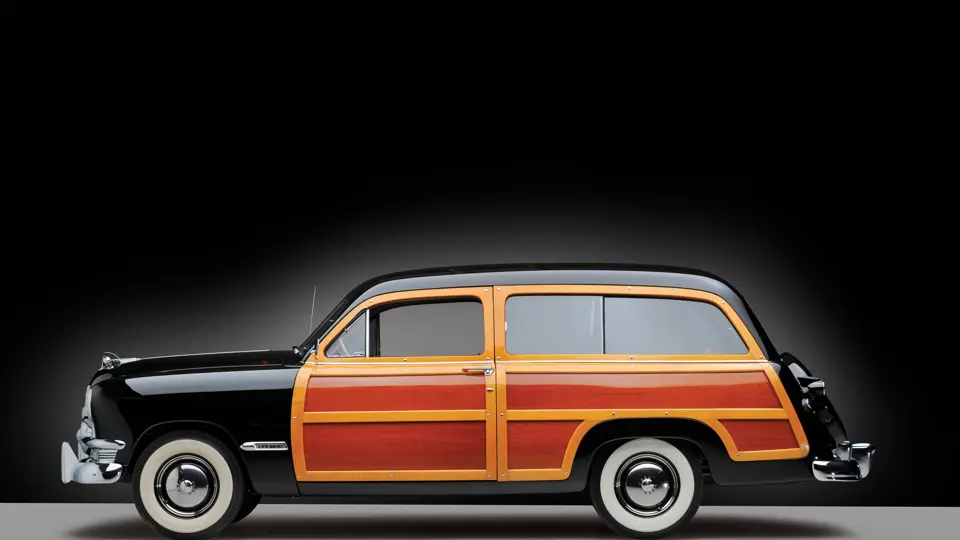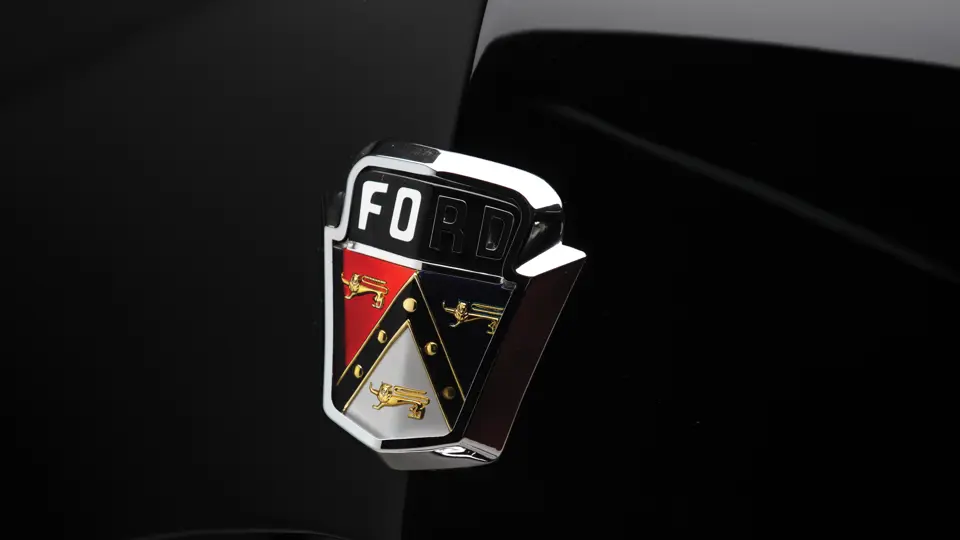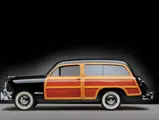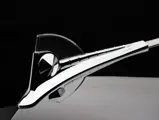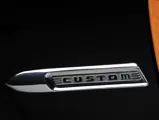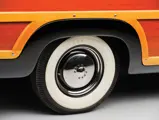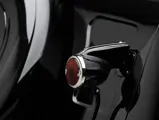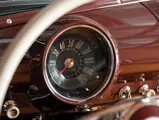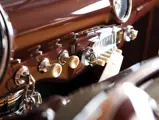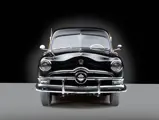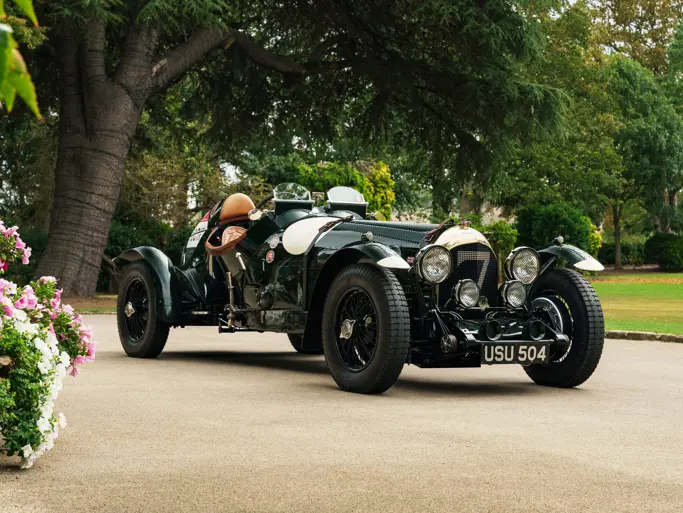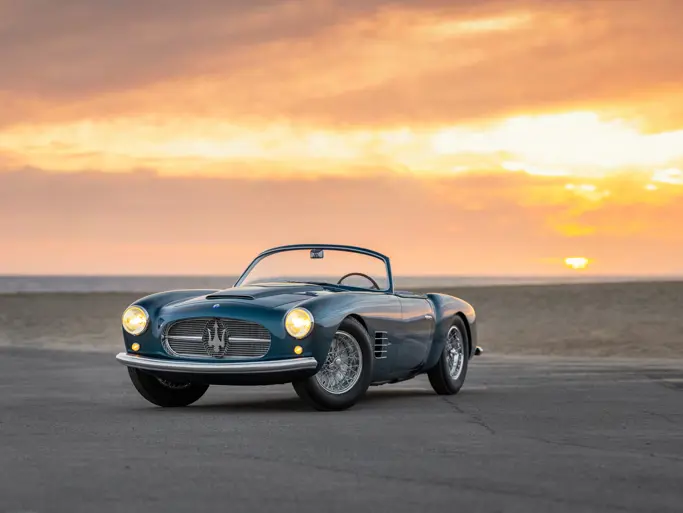MODEL 0BA. 100 bhp, 239.4 cu. in. L-head V-8 engine, three-speed manual transmission, coil spring independent front suspension, live rear axle with semi-elliptic leaf springs, and four-wheel hydraulic drum brakes. Wheelbase: 114"
While Ford’s all-new 1949 models were a big hit, station wagons posed a challenge. For many years the nation’s “wagonmaster,” Ford, was accustomed to out-producing all competing manufacturers of station wagons. From the 1940 models through to the 1948 models, the wagon bodies had been made in Ford plants in upper Michigan, with wood from Ford forests. However, traditional wagon bodies would not work with the new cars’ lines. Moreover, the competition was phasing out wood altogether. But Ford had much image equity in the wood art form and was reluctant to go all-steel. A steel skeleton body was designed and skinned with mahogany plywood, trimmed in maple or birch. Laminating and heat-bonding techniques learned during the war while building gliders for the armed forces led to curved wood laminates. This construction not only allowed complex wood shapes, it reduced waste and was cheaper. Only two-door station wagons were built, and the Ford wagon came only in upscale custom trim, called “Custom Deluxe” in sales literature.
For 1950, Ford station wagons had real leather only on the driver’s seat (second and third seats were in vinyl) and received the automatic courtesy light, now standard on Custom Deluxe models. There were two versions of the station wagon in 1950. The early model carried over the window design, seats, and wood tailgate of the 1949 Custom. In May 1950, to keep pace with competitors’ new developments, a revised model was introduced. The second seat could be folded flat for load space, although the third seat still had to be removed. The side windows were changed so that only the forward pane slid open, and a steel stamping replaced the wood tailgate. The side panels, too, were now steel, with DI-NOC imitation wood grain. Although the name did not appear on the cars, the new Ford wagons received a new title, “Country Squire.”
The Dingman Collection acquired this 1950 Ford station wagon from New Jersey collector Walter Hansen in 2003. An excellent example of the mid-year Country Squire version, it has the metal tailgate and folding second seat. Upon acquisition, it was sent to Kevin Westmoreland’s renowned Performance Restoration facility in Georgia to be completely restored at a great cost. All told, over $135,000 was spent on returning this car to its as new, showroom appearance.
The result is spectacular. Finished in black, the car exhibits a deep shine, with no flaws in body contours or paint. The brightwork is of excellent quality, and the interior, including the rubber floor mats and pedal pads, is that of a new car. It is equipped with a pushbutton AM radio, a Magic Air fresh-air heater, and a correct Borg electric clock, the latter with its instruction tag attached. The heater controls also have their instructions hanging from a knob.
Ford’s signature wood body is finished in exemplary fashion. The varnish has a high gloss and an unblemished surface. The engine compartment is as new, with correctly painted and detailed components, including Ford script hoses and gold paint on the engine and air cleaner. Although the restoration was completed a few years ago, this Country Squire has been regularly and carefully maintained, while accumulating virtually no mileage. It is, in effect, a new car!
The new Ford station wagons were immediately popular. While the best year for Ford wagons had been 1947, with more than 16,000 built, 1949 easily beat the mark by exceeding 31,000, albeit with an extended, 17-month model year. With a considerably shorter season, 1950 did comparably well, with nearly 23,000 finding happy customers. With a virtually new car being offered, the new owner of this 1950 Country Squire is in for a treat.
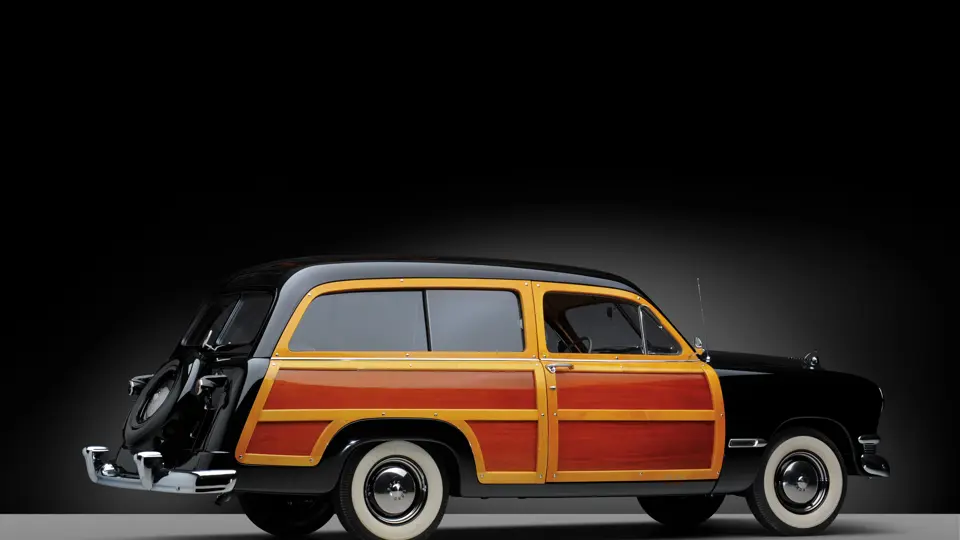






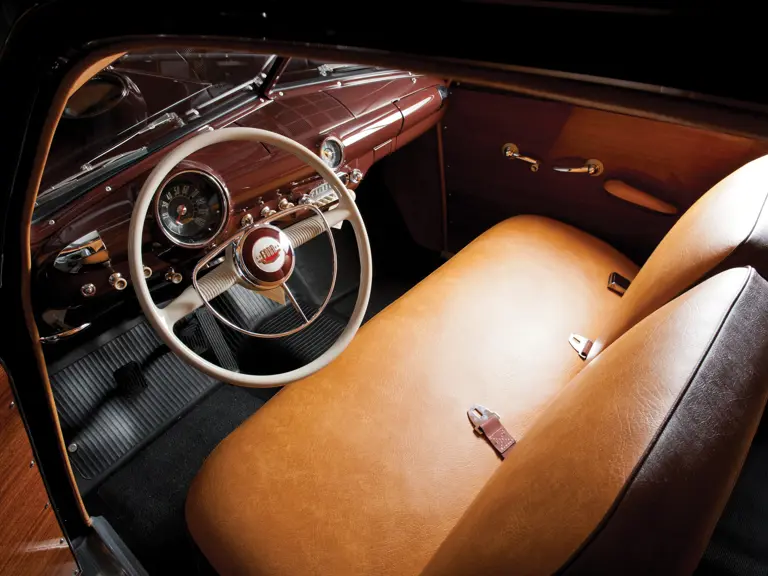

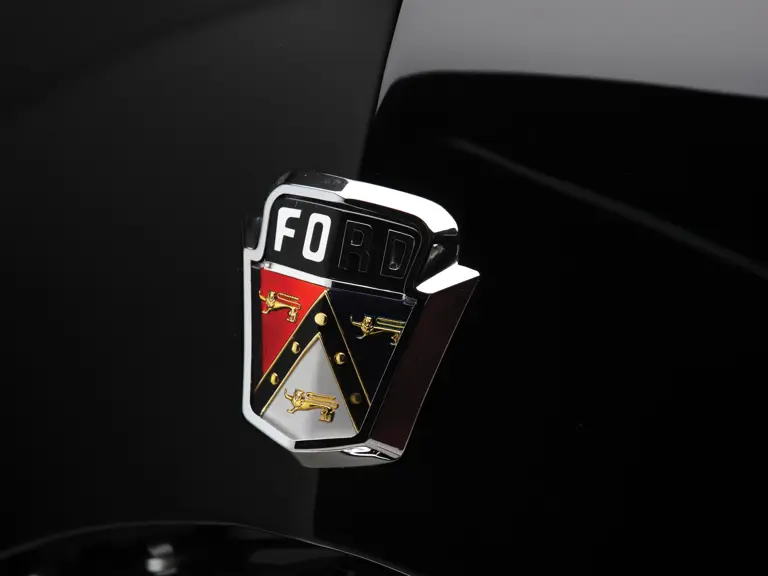
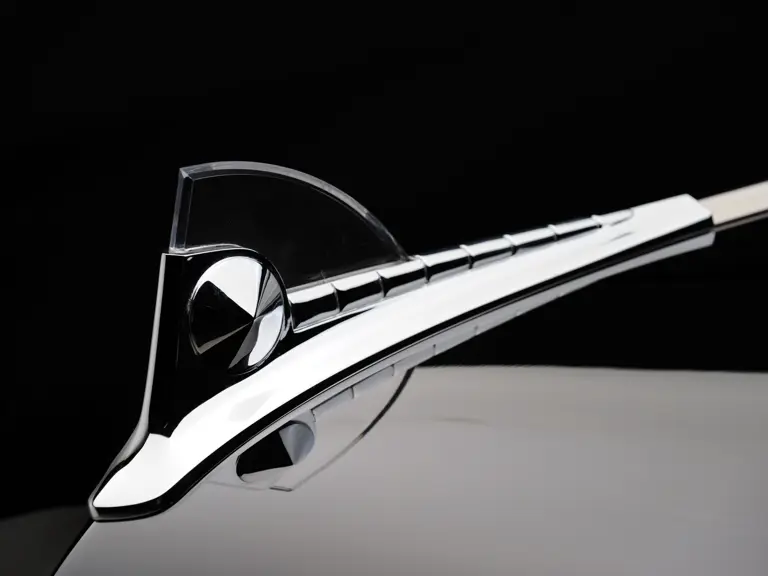




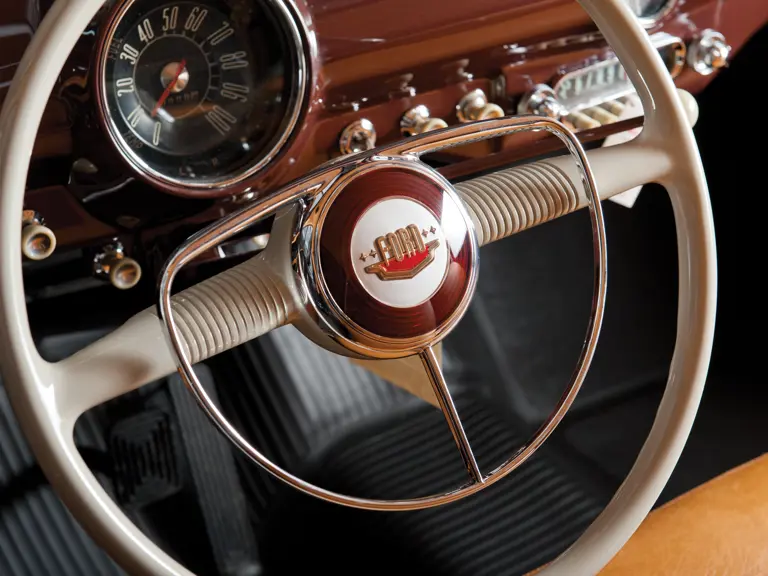

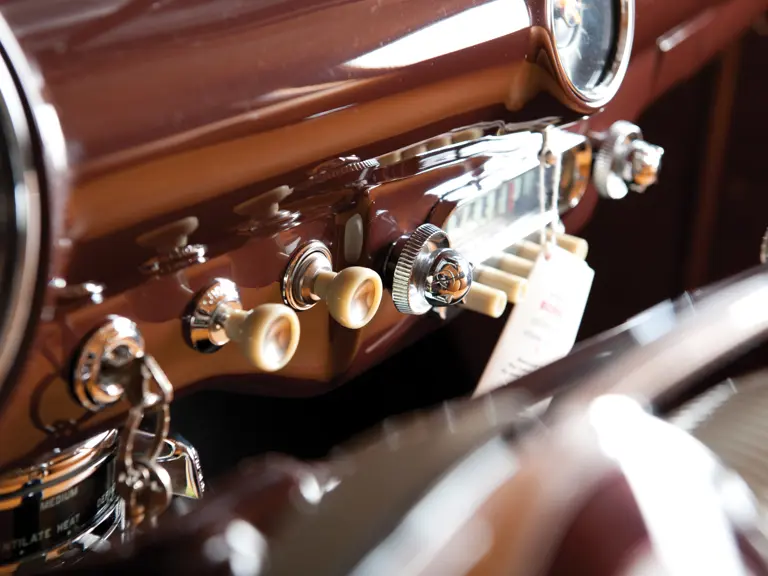
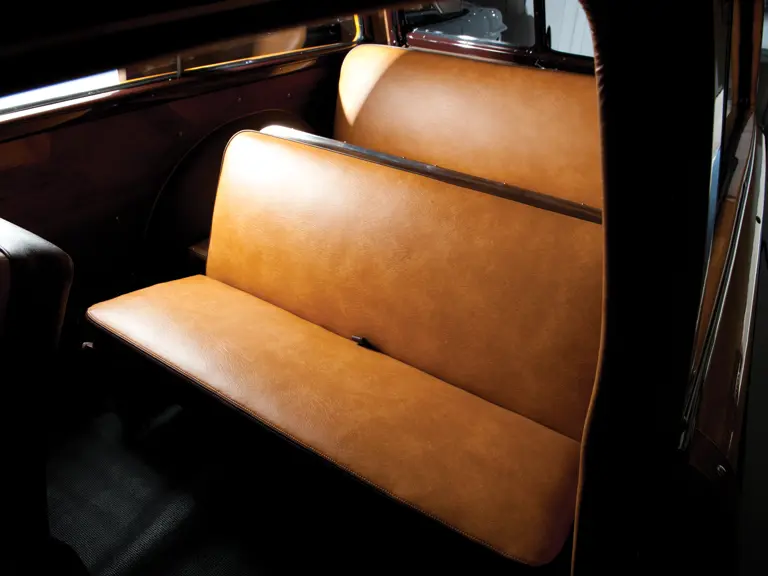
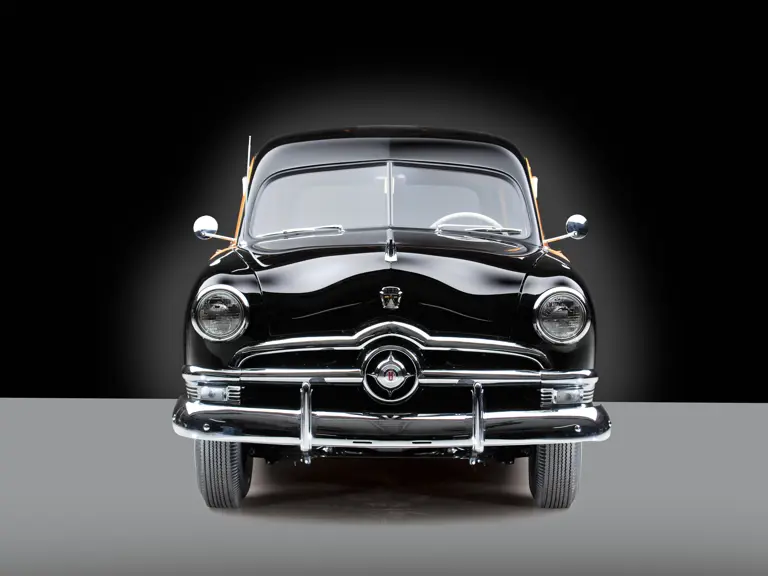
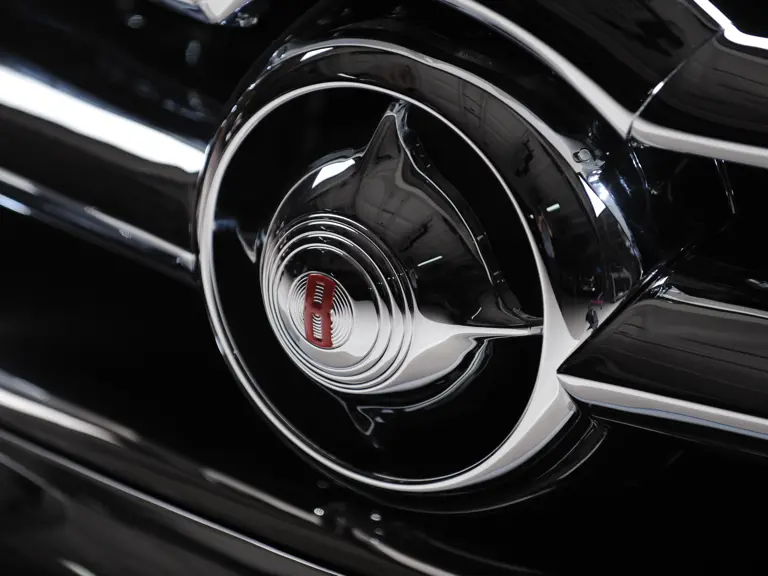

 | Hampton, New Hampshire
| Hampton, New Hampshire
